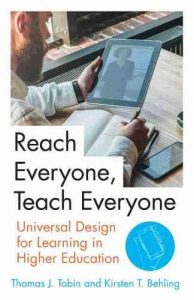
For Your Reading Pleasure periodically features a summary and review of a book submitted by a Montgomery College employee. The books contribute to our professional development in various areas of interest listed on the left nav bar. Take a moment to browse through the books and discover something new.
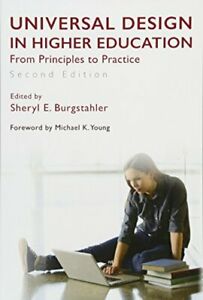
Edited by Sheryl E. Burgstahler
This second edition of the classic Universal Design in Higher Education is a comprehensive, up-to-the-minute guide for creating fully accessible college and university programs. The second edition has been thoroughly revised and expanded, and it addresses major recent changes in universities and colleges, the law, and technology. As more people with disabilities attend postsecondary educational institutions, there have been comparable greater efforts to make the full array of classes, services, and programs accessible to all students. This revised edition provides both a full survey of those measures and practical guidance for schools as they work to turn the goal of universal accessibility into a reality.
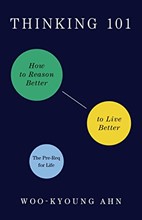 Thinking 101
Thinking 101
by Woo-Kyoung Ahn
Psychologist Woo-kyoung Ahn has created a course titled “Thinking” at Yale University with the aim of helping students examine the biases that frequently lead to problems in their everyday lives. The course has gained immense popularity within the university. Ahn now shares her invaluable insights, accumulated over years of teaching and research, in a book that caters to a wide audience.
In the book, Ahn reveals how various challenges, ranging from minor irritations to significant societal issues and inequalities, can be attributed to “thinking problems.” She relies on extensive research conducted by cognitive psychologists, including her own groundbreaking studies, to support her arguments. Ahn presents the information in an engaging and accessible manner, incorporating entertaining examples from popular culture, personal anecdotes, and enlightening stories from history and current events.
Thinking 101 offers practical guidance on how to enhance not only our own lives through increased awareness of our biases but also the lives of those around us. It is an essential read for anyone interested in improving their thinking skills and overall quality of life, and it offers faculty an excellent resource for incorporating critical thinking skills into their classes.
Teaching and Learning
 Flipped Learning: A Guide for Higher Education Faculty
Flipped Learning: A Guide for Higher Education Faculty
by Robert Talbert
Flipped learning is an instructional approach that involves students being introduced to new concepts and material before class, allowing class time for activities in which students often require the most assistance, such as applying the foundational material and engaging in in-depth discussions and creative work. Despite the excitement generated by flipped learning and its proven potential to enhance learning, engagement, and metacognitive skills, there needs to be a comprehensive guide on implementing this teaching method in higher education.
Robert Talbert, an experienced practitioner of flipped learning in various settings, offers faculty members a practical, step-by-step guide on effectively employing this powerful teaching technique. The book caters to readers interested in exploring flipped learning, those who have recently started using it, and experienced practitioners. It strikes a balance by presenting research on flipped learning and its theoretical foundations, offering course design concepts to help instructors create effective flipped learning experiences, providing tips and real-life case studies from different disciplines, and addressing practical considerations like student buy-in and encouraging participation in pre-class activities.
This book is intended for anyone seeking strategies to enhance students’ content comprehension, promote student ownership of their work, foster self-regulated learning, increase student effort and productivity during class, and encourage positive engagement with course material. Flipped learning becomes particularly impactful when implemented on a broader scale across departments, making it an idea with the potential to dramatically change higher education teaching practices.
The Norton Guide to Equity-Minded Teaching
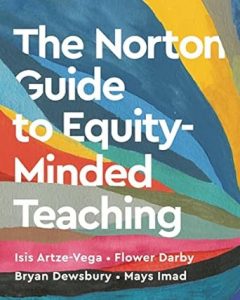 by Isis Artze-Vega, Flower Darby, Bryan Dewsbury, and Mays Imad
by Isis Artze-Vega, Flower Darby, Bryan Dewsbury, and Mays Imad
equity-minded: describes teaching practices that strive to realize equal outcomes among all students (from The Norton Guide to Equity-Minded Teaching, p. xvii, 2023)
Written by experts in teaching and learning, The Norton Guide to Equity-Minded Teaching provides specific techniques to assist professors in guaranteeing an equitable opportunity for success for every student, with a particular focus on historically underserved populations. The authors offer practical advice based on research for effectively teaching college courses, whether online, in-person, or hybrid, and they do an especially good job of connecting research to practice. This book is highly recommended for teachers who wish to build an inclusive learning environment in their classrooms and change the lives of their students.
Inclusive Teaching: Strategies for Promoting Equity in the College Classroom
by Kelly A. Hogan and Viji Sathy
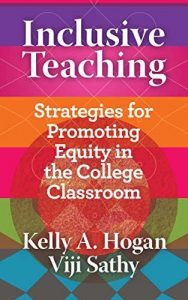
Authors Kelly Hogan and Viji Sathy provide a captivating book for college instructors, offering guidance on creating an inclusive environment in which every student feels valued. The authors introduce a framework emphasizing the significance of paying explicit attention to course structure; this framework promotes inclusiveness in course design and student interactions. In their work, Inclusive Teaching: Strategies for Promoting Equity in the College Classroom, Hogan and Sathy present practical strategies to incorporate diverse perspectives in various scenarios, such as providing instructions for group assignments, engaging in-class activities, conducting office hours, and communicating effectively with students. The book concludes by encouraging readers to contemplate the type of evidence that should be included in a teaching dossier to showcase inclusive teaching practices.
 Transnational Identities and Practices in English Language Teaching: Critical Inquiries from Diverse Practitioners
Transnational Identities and Practices in English Language Teaching: Critical Inquiries from Diverse Practitioners
Edited by: Rashi Jain, Bedrettin Yazan, Suresh Canagarajah
The self-inquiries in this edited volume exemplify the dynamism that permeates global ELT, wherein English language educators, and teacher educators are increasingly operating across blurred national boundaries, creating new ‘liminal’ spaces, charting new trajectories, crafting new practices and pedagogies, constructing new identities, and reconceptualizing ELT contexts. This book captures the diverse voices of emerging and established ELT practitioners and scholars, originally from and/or operating in non-Western contexts, spanning not only the so-called non-Western ‘peripheries’, but also peripheries created within the ‘center’ when certain members are minoritized based on their race, language, and/or place of origin. The chapters address a range of related issues occurring at the intersections of personal and professional identities, pedagogy and classroom interactions, as well as research and professional practices in liminal transnational spaces.
 Transnational Research in English Language Teaching: Critical Practices and Identities
Transnational Research in English Language Teaching: Critical Practices and Identities
Edited by: Rashi Jain, Bedrettin Yazan, Suresh Canagarajah
The self-inquiries in this edited volume exemplify the dynamism that permeates global ELT, wherein English language educators, and teacher educators are increasingly operating across blurred national boundaries, creating new ‘liminal’ spaces, charting new trajectories, crafting new practices and pedagogies, constructing new identities, and reconceptualizing ELT contexts. This book captures the diverse voices of emerging and established ELT practitioners and scholars, originally from and/or operating in non-Western contexts, spanning not only the so-called non-Western ‘peripheries’, but also peripheries created within the ‘center’ when certain members are minoritized based on their race, language, and/or place of origin. The chapters address a range of related issues occurring at the intersections of personal and professional identities, pedagogy and classroom interactions, as well as research and professional practices in liminal transnational spaces.
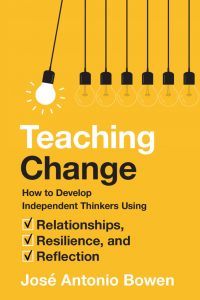 Teaching Change: How to Develop Independent Thinkers Using Relationships, Resilience, and Reflection
Teaching Change: How to Develop Independent Thinkers Using Relationships, Resilience, and Reflection
by
An exploration of the difficulty of human learning, especially the ability to change your mind. Teaching Change makes a powerful argument as to how a new 3Rs of relationships, resilience, and reflection can better prepare graduates for an uncertain future. Elegant and gripping explanations of recent and wide-ranging research from biology, economics, education, and neuroscience are paired with hundreds of practical suggestions for individual teachers.
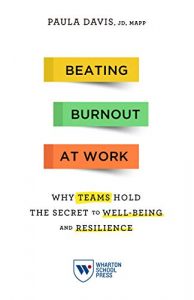 Beating Burnout at Work: Why Teams Hold the Secret to Well-Being and Resilience
Beating Burnout at Work: Why Teams Hold the Secret to Well-Being and Resilience
by Paula Davis
A first-of-its-kind, science-backed toolkit takes a holistic approach to burnout prevention by helping individuals, teams, and leaders build resilience and thrive at work. Burnout has become one of the most talked-about workplace topics, and its impact is far-reaching. The 24/7 pace of work, constant demands, and scant resources can quickly put busy professionals on a path to burnout, a cycle that has only accelerated during the COVID-19 pandemic. Burnout affects the health and well-being of the entire organization, yet most attempts to help focus on quick-fix strategies aimed at individuals. Something is missing. In Beating Burnout at Work: Why Teams Hold the Secret to Well-Being and Resilience, Paula Davis, founder of the Stress & Resilience Institute, provides a new framework to help organizations prevent employee burnout. Davis’s research-driven, fast-reading, and actionable book is the first of its kind to explore a new solution to the burnout problem at work: a comprehensive approach focused on building the resilience of teams of all sizes. Davis argues that teams and their leaders are uniquely positioned to create the type of cultures needed to prevent burnout.
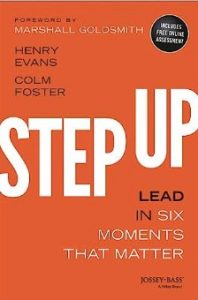 Step UP – Lead in Six Minutes that Matter
Step UP – Lead in Six Minutes that Matter
By Henry Evans and Colm Foster, Copyright 2014, published by Dynamic Results
In this “handbook,” Henry Evans and Colm Foster teach readers to recognize habitual thinking patterns that lead to common behavioral traps and obstruct organizational progress. They follow with practical intervention skills for precisely re-directing one’s own mood, focus, energy, and behavior, and that of the team, to advance the shared mission. With these skills, anyone can lead more effectively in the pivotal moments that matter most.
The chapters address the following general strategies:
- Using anger intelligently in the workplace
- Recognizing and dealing with “terminal politeness”
- Making decisions when no one else is making them
- Taking ownership when others are externalizing a problem
- Identifying and leveraging pessimism
- Inspiring others to action
The authors’ approach is similar to that of a high-quality pitching coach working day after day with a team of inexperienced pitchers – teaching the physics, then progressing through big changes in form to more and more precise tweaks. Each chapter addresses a particular ineffective type of habit and presents positive replacement behaviors through examples from the authors’ consulting practice.
This book is well-written and well worth a reader’s time and attention.
Reviewed by Jamie Karn, campus planner, Office of Facilities, 22nd Leadership Development Institute

